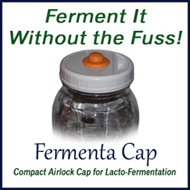Turkeys
Royal Palm Turkey
It is always a delight to me to find livestock that is both beautiful, and practical. I always want to herald the breeder who sought a particular appearance, but did not feel the need to compromise usefulness in the quest.
The Royal Palm is as much a metaphor for Heritage Breeds as the Sebright chicken. Both lovely. One useful, the other in need of much work to become so.
Royal Palms are thrifty turkeys, and can thrive on marginal forage while still producing a carcass that is on the small side of medium. They are excellent foragers - if food exists, they are happy to go find it, and will go romping after insects, and enthusiastically dig for grubs and worms. They fly well, and need high fences, ample pastures and a compelling reason to stay within them - or they need netting over their range.
Their semi-wild traits are a great advantage if you work WITH them. If you try to turn this bird into a confined meat producing machine, it will backfire on you. They are more likely to be contentious in close confinement.
Hens will sometimes brood, and are excellent mothers. This breed is the most likely to accept fosters from other hens, if the poults have not yet imprinted, and if they are close to the age of her own poults.
It is also surprising that the hardiness and adaptability has not been bred out of them, though there is still some selective breeding to do where poult survivability is concerned.
- Type - meat
- Size - medium to small, depending on bloodlines and management
- Production Capacity - good producers of small table birds, and more prolific than many turkeys
- Special Features - fostering ability is kind of unique in turkeys
- Best for Farms - Royal Palms are a great pastured turkey meat producer for homesteads, and a good sale bird for breeding stock or hatching eggs.
- Eggs, Milk, Meat Features - large cream to brown eggs
- Other Products - some market for feathers
- Historic or Contemporary Significance - practical utility bird that can be of great value to small profit farms and homesteads
- Housing and Space Requirement - should not be crowded in shelter or on pasture
- Regional Adaptations - adaptable to a wide range of conditions, not as heat sensitive as darker colored turkeys in sunny climates
- Feed Requirement - require forage for optimal health, or fodder feeds and insect or worm protein sources
- Other Considerations - Royal Palms are typically bred for show. Make sure that the stock you purchase has not been over-bred for show qualities at the expense of utility traits. Also, show breeders can be really touchy about selling their stock to those intent on breeding for meat, so tread carefully.
A NOTE ABOUT TURKEYS:
Turkeys are typically raised in some degree of confinement, though many have some access to pasture (not sufficient for significant feed contribution). In this situation, and where breeding emphasizes the ability to rapidly gain weight over all other traits, Turkeys have lost much of their foraging ability. The wonderful thing is though, that these instincts can be sharpened right back up, simply by making a variety of foods available, and by reducing pre-mixed feeds so the birds are required to vary their diet.
Turkeys are omnivores, and eat pretty much anything, including bugs, small rodents, vegetables, weeds, fruits, grains, seeds, nuts, etc. They are most fertile with a healthy amount of animal or insect proteins, and they are healthiest when they have plenty of greens to forage.
Turkeys may be fed a variety of those items, generally smaller seeds and smaller pieces of vegetation (dried or fresh) from the time they hatch. They will usually eat what is familiar, and it may take several exposures to get them to eat a new thing if they have been fed commercial feeds (this is true of most animals). But with repetition, those things which are good for them will eventually be consumed, and they will be willing to eat an amazing variety of foods, and to hunt and forage for a large portion of their own food if good forage is made available. Not only does their foraging instinct sharpen up, but they quickly learn to self-regulate their nutritional needs (provided a variety is available) and they will rarely eat anything that is harmful for them once they are practiced at eating forage foods (the exception is if you chop and mix foods and thereby force them to eat the bad along with the good, or if there is nothing else for them to eat but harmful foods). Animals are smart when we let them be!
Many Heritage breeds are smaller than the breed standard calls for since they have not been bred for productivity for many decades. Selective breeding for several generations will restore production traits, and other utility traits, and restore not only the breed names, but the true value of the breed.
Male Turkeys can always be aggressive in breeding season, and some may be just out of general cussedness. An angry Tom is nothing to be casual about. Hens can be defensive when brooding. Even "calm" breeds will have these issues, they are animals that protect their territory and their young. Respecting that makes it easier to raise Turkeys without unpleasant confrontations. More aggressive toms and hens also are better defenders against predators, so there is a definite trade-off.
The Americal Poultry Association claims that there is only one breed of turkey, and many strains. Their definition of a breed versus a variety seems to contradict their position where turkeys are concerned. We, and a number of other authorities which have as much right to define them as the APA does, feel otherwise, and refer to the majority of Turkeys as Breeds rather than Varieties.
 Click to Download Your Free Heritage Pickling and Culturing e-Book Now!
Click to Download Your Free Heritage Pickling and Culturing e-Book Now!
Instant Download, NO Registration Required!






